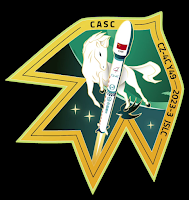Virgin Orbit logo.
April 1, 2023
(This article is unfortunately not an April Fool's Day joke)
Richard Branson’s satellite launch company, which hasn’t recovered since a January mishap in Britain, has laid off nearly all its employees.
The failure in January of what was to be the first launch of a satellite from Britain was a mighty disappointment for a fledgling British space program. Now, it seems like the botched flight may lead to the demise of Virgin Orbit, the launch company.
In a U.S. securities filing on Thursday, the California company, part of Richard Branson’s Virgin Group, said it was laying off 675 employees, or about 85 percent of its work force. Virgin Orbit said it was acting because of “inability to secure meaningful funding.”
Launch of LauncherOne rocket (Illustration). Image Credit: Virgin Orbit
Dan Hart, Virgin Orbit’s chief executive, had been scrambling to find additional money since the company’s rocket failed to reach orbit after its launch from Cornwall, England. A spokeswoman for the company declined to comment beyond the filing.
Virgin Group has apparently decided against further major funding of the company, although it is covering most severance payments. Some Virgin Orbit employees may find jobs at Virgin Galactic, Mr. Branson’s other space company.
The company’s stock, whose value has largely evaporated in recent months, plummeted 40 percent on Friday.
Virgin Orbit’s woes may raise doubts about the company’s unusual method of putting satellites in orbit. The company used a converted Boeing 747 aircraft that would carry aloft a satellite-packed rocket under its wing. Once airborne, the rocket would detach and fire its engine, climbing upward into orbit before releasing the satellites.
This launch format had the advantage of being more flexible and cheaper than vertical rocket launchers because it could operate from airstrips around the world. For that reason, it is likely to remain of interest to governments including the United States, some analysts say.
“I can’t believe the whole idea of horizontal launch will go away,” said John Beckner, chief executive of Horizon Technologies, a Reading, England, company that lost a satellite in January’s launch.
Still, the method so far has failed to establish itself as reliable. Virgin Orbit’s underwing rocket also had less capacity than more conventional systems like Elon Musk’s SpaceX. It was always likely to be more of a niche product than those of competitors.
Virgin Orbit's "Cosmic Girl" Boeing 747 during a test flight. Image Credit: Virgin Orbit
Virgin Orbit’s woes leave a hole in Britain’s ambitions to be a space power. Britain has a robust satellite-manufacturing industry that has felt hampered by the lack of a launching site at home.
The company’s troubles also may be a hard blow for the fledgling space industry taking shape around Virgin Orbit’s launch site in Cornwall, in southwest England. Investments of 21 million pounds (about $26 million) had been made at the Newquay airport so that satellites could be loaded onto rockets there. But there are other sites under development in Britain for launching satellites.
The January launch was a high-profile event in Britain that was enthusiastically supported by the country’s space community. Britain’s satellite builders were delighted that they would no longer need to go to New Zealand or Kazakhstan to launch their vehicles.
The 747 took off successfully, but after the 70-foot rocket was launched and climbed higher, the second-stage engine suffered an “anomaly” about 110 miles above the earth and failed to reach orbit. The nine satellites on board were lost, a blow to their owners. An investigation has been underway. Virgin Orbit has not issued a full disclosure of the causes of the crash, although a malfunctioning fuel filter appears to have played a key role.
Virgin Orbit’s previous launches had been from the Mojave Desert in California, and four out of five had been successful. But the failed launch in Cornwall wound up being disastrous for the company. Along with being a poor advertisement for prospective future customers and funders, the launch crew, normally based in California, spent far longer than they anticipated in Britain, burning up slim financial resources.
Related articles:
Virgin Orbit Update on UK Mission Anomaly
https://orbiterchspacenews.blogspot.com/2023/02/virgin-orbit-update-on-uk-mission.html
Virgin Orbit - Failure of a historic space mission
https://orbiterchspacenews.blogspot.com/2023/01/virgin-orbit-failure-of-historic-space.html
Virgin Orbit - LauncherOne launches “Start Me Up”
https://orbiterchspacenews.blogspot.com/2023/01/virgin-orbit-launcherone-launches-start.html
Related link:
Virgin Orbit: https://virginorbit.com/
Images (mentioned), Text, Credits: Virgin Orbit/The New York Times/By Stanley Reed.
Greetings, Orbiter.ch










































